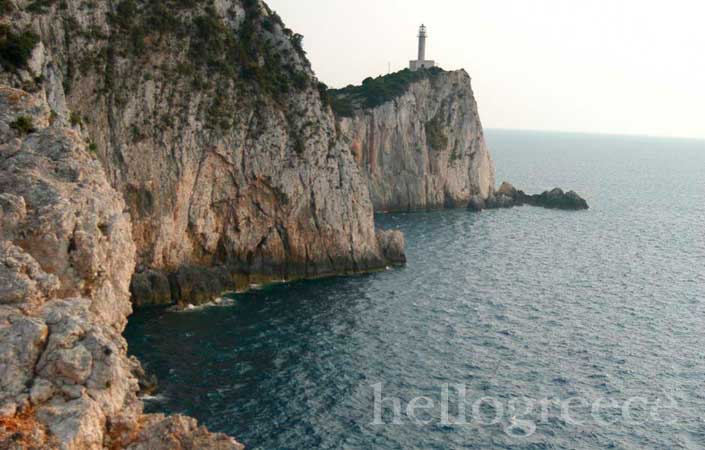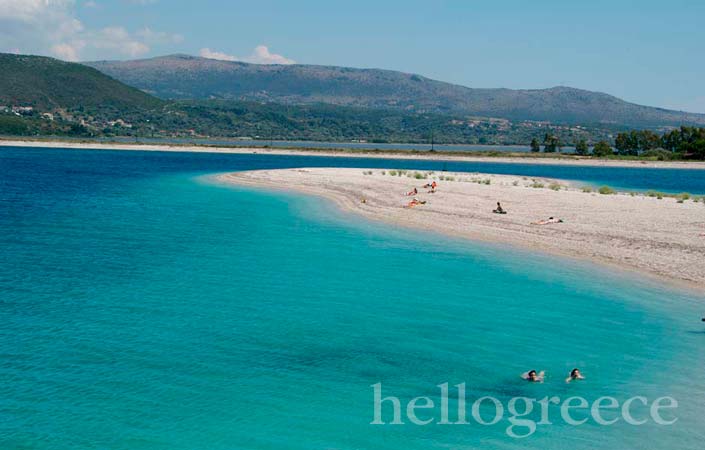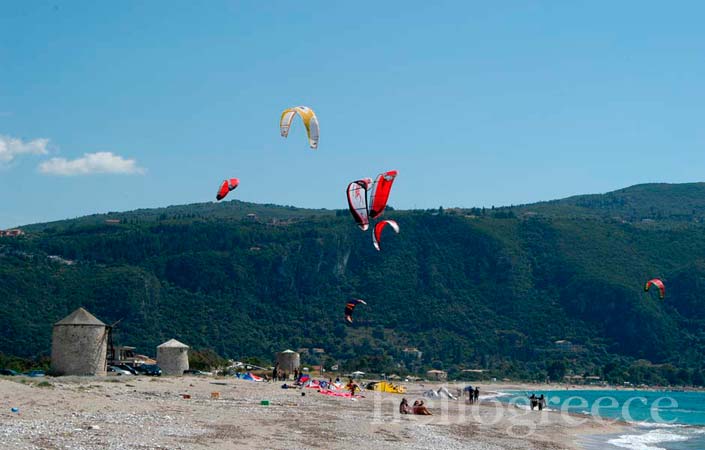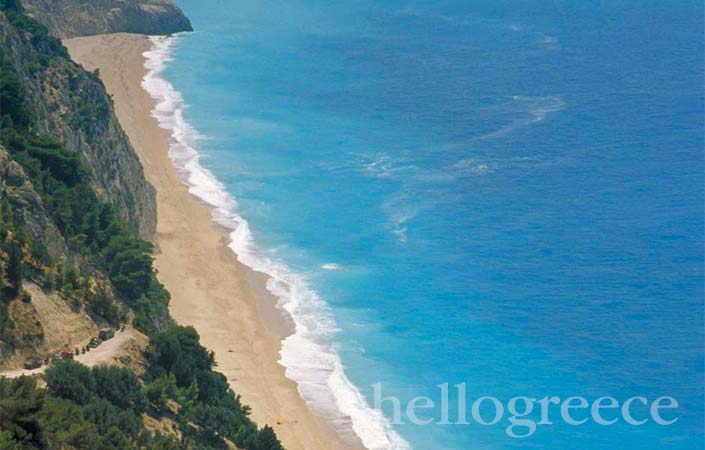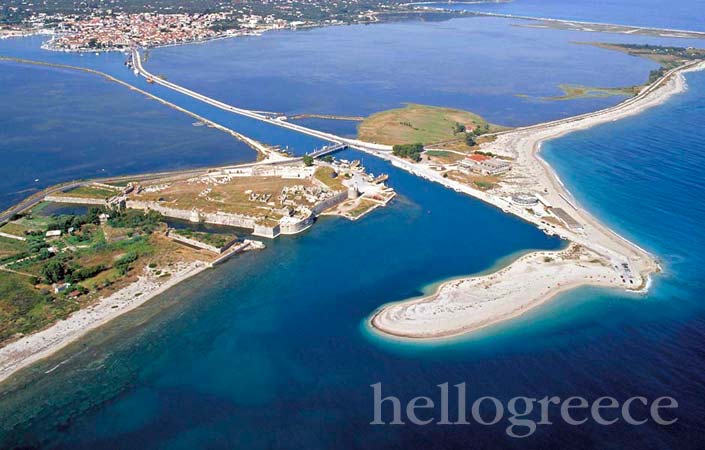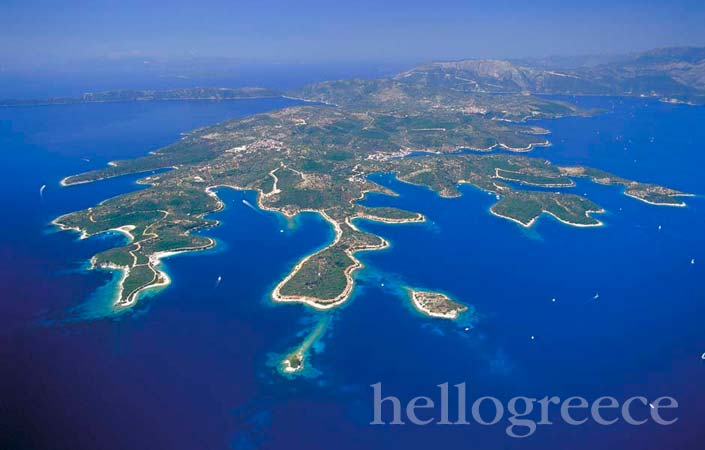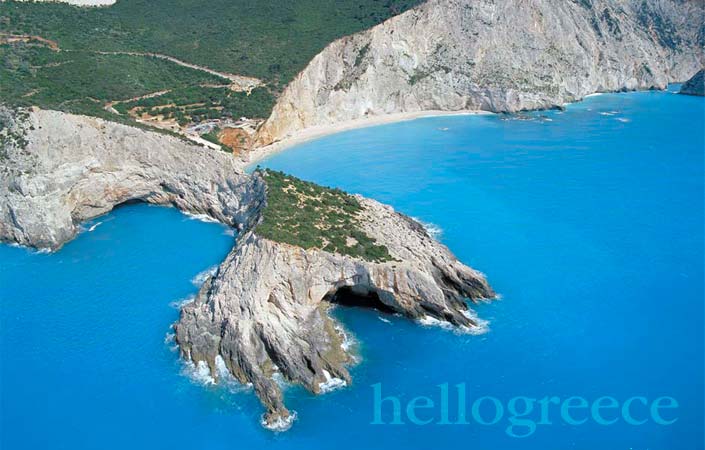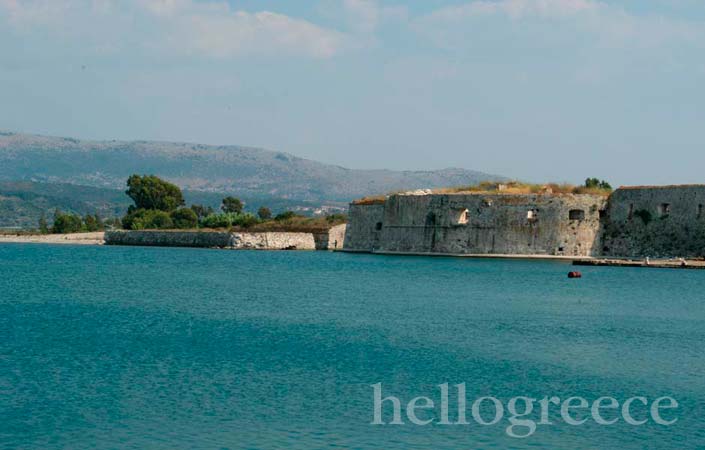Lefkada
Lefkada
Lefkada “the emerald island” is a beautiful island in the Ionian Sea situated between Corfu and Kefalonia. It is the fourth larger of the Ionian islands with an area of 302 sq.km. and a population 23.000 people.
Lefkada is very close to the mainland, the coast of Akarnania in Western Greece. A lot of historians like Thucydides and Stravon report Lefkada in their books as a peninsula. The distance is only 50 metres and the island is connected from the mainland via a navigable bridge.
Around the island of Lefkada are 20 smaller islets. Meganisi (the sailor’s island), Kalamos, Kastos, Madouri (on it is the house of the great poet Arist. Valaoritis), Scorpios (the privately-owned island of Arist. Onasis), Sparta, Kythros, Thileia and all together constitute administratively the prefecture of Lefkada with capital the city of Lefkada.
The name Lefkada derives from the white steep rocks on the southern cape of the island, Leykata which means with stones.
Lefkada is an ideal combination of sea and mountain.
The island is mountainous for the most part with the highest peak reaching 1140 m.. The mountainous volumes fall abruptly in the sea forming beautiful coasts. Between the mountains are fertile plains like the ones of Fleva, Vasiliki and Egklismenos and gorges with rich vegetation.
In the north of the island is the lagoon, a very important biotope for a lot of species of birds.
The climate is Mediterranean. The Mediterranean climate is known for its many sunlight days, the mild winter, the hot summers accompanied by cooling breezes.
Sights
- the castle of Agia Mavra
- The windmills in Gira
- The lagoon with the biotope and the traditional fish-farm
- The olive grove with the centenarian olive trees in the north of the town of Lefkada
- The ruins of ancient Lefkada near the village Kalligoni
- On Madouri island the house of Arist. Valaoritis
- In Meganisi, the cave of Papanikolis, where the legendary submarine Papanikolis found refuge during World War II.
- The “Kastromonastiro” the castle in Kalamos
- The traditional houses with the multi-colored doors and windows with the unique anti-seismic building system.
- The house where the national poet of Japan, Lefkadios Hern (Giakoumo Koizoumi) was born
- The house of the poet Kleareti Dipal Malamou
Beaches
The beaches of Lefkada were voted as the best in the Mediterranean.
- Porto Katsiki, with its crystal clean waters considered the best beach in the Mediterranean.
- Egremni
- the magnificent sandy beach of Kathisma
- Mylos
- Agios Nikitas
- Pefkoulia
- the golf of Vasiliki and Agiofili
- Katsro
- Gyra
- Agios Ioannis
- the cosmopolitan Nidri
- Nikiani
- Perigiali
Sports – Entertainment
Sport lovers will find on the island every known sport.
- The strong winds on the beach of Vasiliki to the south and Gira to the north are ideal for the lovers of wind-surfing.
- In the beach of Mylos kite – surfing competitions take place every year.
- The hill side over Kathisma beach is an ideal staring point for slope parachuting
- In the cosmopolitan Nidri you will find all sports that involve sea or sky, water-ski, jet-ski. Cano, banana, parasailing etc
- Diving in the magnificent sea bottom
- The mountain area of LEfkada with the gorges, rich vegetation rare flowers and graphic paths create the ideal conditions for walks and excursions in the country side.
- Mountain – bike in the gorge of Melissa, in the forest of Dafni
- Horse riding schools
- Air – club in the town of Lefkada
Churches
- the Ionian rhythm churches with wooden craft temples like Agios Spyridonas, Panagia ton Xenon, Panagia ton Eisodion, Agios Dimitrios, Agios Minas, Agios Nikolaos and the church of Pantokratoras where in the backyard is the tomb of the poet and politic Aristotelis Valaoritis.
- St John of Angousi out of the town, and according to tradition the first church of Lefkada. Here Apostel Paul celebrated a mass on his way to Rome.
- The historic church of Panagias Vlahernon where in 1821 gathered the chieftains and notables of Roumeli gathered to swear in the Holy Gospel, faith to the fight for freedom from the Turks.
- The church of Panagia Faneromeni of the 17th century on the top of a hill with magnificent view.
Museums
- The Archaeological museum, in the town of Lefkada with findings from the excavations on the island.
- The folklore Museum Orpheus
- The Public Library with collections of books and pictures.
- The Phonographic and rare items Museum
- The Charamoglios Library with rare books, prints and maps.
History
Life on the island can be traced back to Neolithic times.
The people of Lefkada were part of many major historical events. Historical sources mention them participating in the naval battle of Salamina, the battle of Plataia, the Peloponnesian war, the campaign of Alexander the great and the war against the Romans in the 3rd century B.C.
The history of Lefkada begins from the end of the 7th century B.C. when the island was inhabited from the Corinthians who opened the isthmus. In time Lefkada developed as a commercial centre.
In 1300 J. Orsini builds in the entry of the island the fortress Santa Mavra, a model of fortress craftsmanship of the medieval years.
In 314 the island is subjugated to Kassandros, in 197 B.C. to the Romans, in 1204 A.C. it passes to the Venetians, in 1477 to the Turks until 1684, that it is occupied from the Venetian Morazinis. From 1815 until 1864 the English control the island. Afterwards Lefkada like the rest of the Ionian islands is united with Greece.
Lefkada has produced great intellectual figures. Among them are the national poets of Greece Aristotelis Valaoritis and Aggelos Sikelianos. Of Lefkadian origin is also the national poet of Japan Lefkadios Chern.
Information
Access-Transportation
By Bus
Lefkada is the only island which can be visited by car without ferry boats fares by using the floating bridge connecting the island with Akarnia.
The underwater tunnel of Preveza- Aktio create an easy access to the island from northwest Greece and the Port of Igoumenitsa (100 km) forming a great entrance gate from West and Central Europe.
The operation of the bridge Rio Antirio makes easier the connection of the island with the rest of Greece and with the port of Piraeus (170 km) which is the second great entrance gate from Europe.
Lefkada KTEL (Public Bus Service)
www.ktel-lefkadas.gr
0030 26450 22364
Thessaloniki KTEL (Public Bus Service)
Macedonia Public Bus Service
0030 2310 595412
Athens KTEL (Public Bus Service) – Kifisos station
0030 210 5150108
By Ship
From Nydri and Vasiliki to Meganisi, Kefalonia, Ithaca and the surrounding islands.
Lefkada port authority 0030 26450 22322
By Plane
Nearest airport in Aktio Preveza 0030 26820 26113
Useful
Area: 302,5 sq km
Capital: Lefkada
Lefkada prefecture administratively belongs to the Region of Ionian Islands and consists of Lefkada and Meganisi municipalities.


